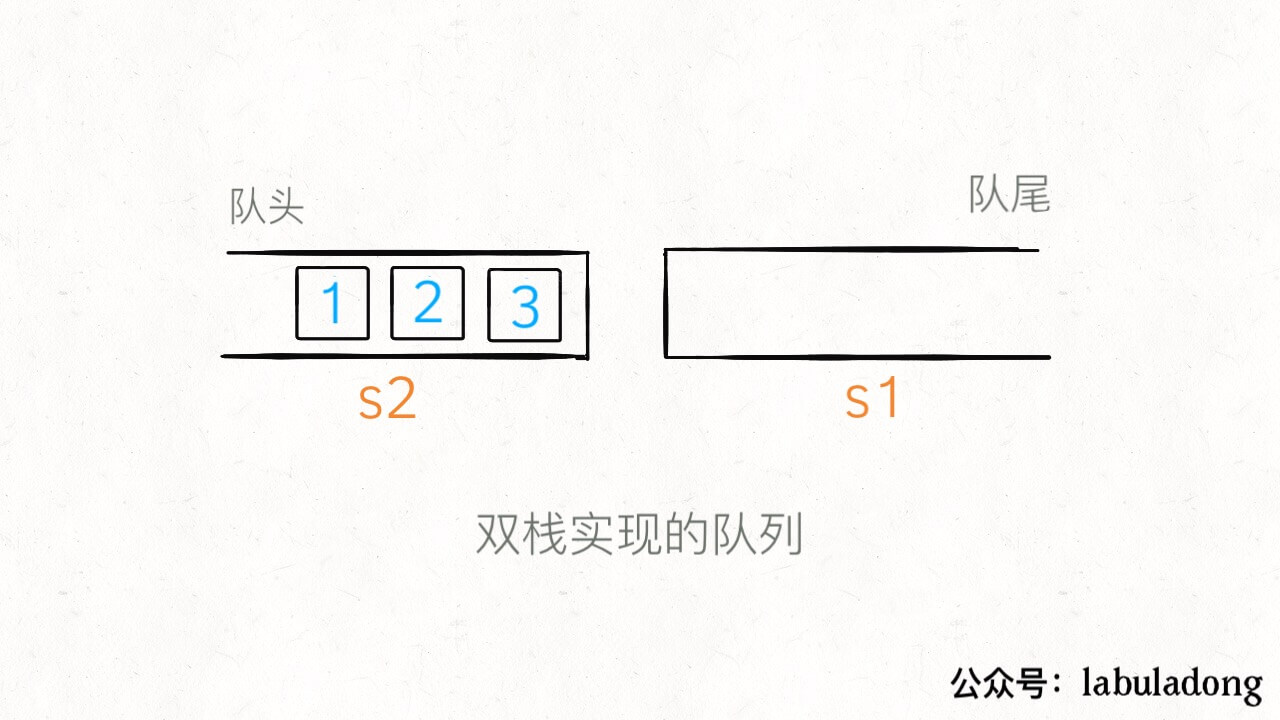232. Implement Queue using Stacks
问题:
设计数据结构,使用stack实现queue。
实现以下功能:
void push(int x)Pushes element x to the back of the queue.int pop()Removes the element from the front of the queue and returns it.int peek()Returns the element at the front of the queue.boolean empty()Returnstrueif the queue is empty,falseotherwise.
Example 1: Input ["MyQueue", "push", "push", "peek", "pop", "empty"] [[], [1], [2], [], [], []] Output [null, null, null, 1, 1, false] Explanation MyQueue myQueue = new MyQueue(); myQueue.push(1); // queue is: [1] myQueue.push(2); // queue is: [1, 2] (leftmost is front of the queue) myQueue.peek(); // return 1 myQueue.pop(); // return 1, queue is [2] myQueue.empty(); // return false Constraints: 1 <= x <= 9 At most 100 calls will be made to push, pop, peek, and empty. All the calls to pop and peek are valid.
解法:双栈->实现队列


重点在:
查队列头peek 和 出队pop
实现方法:
- 若s2中有元素,那么优先出队
- 若s2中无元素,那么s1.pop排空->s2.push
代码参考:
1 class MyQueue { 2 public: 3 /** Initialize your data structure here. */ 4 MyQueue() { 5 6 } 7 8 /** Push element x to the back of queue. */ 9 void push(int x) { 10 s1.push(x); 11 } 12 13 /** Removes the element from in front of queue and returns that element. */ 14 int pop() { 15 int res = peek(); 16 s2.pop(); 17 return res; 18 } 19 20 /** Get the front element. */ 21 int peek() { 22 if (s2.empty()) { 23 while(!s1.empty()) { 24 s2.push(s1.top()); 25 s1.pop(); 26 } 27 } 28 return s2.top(); 29 } 30 31 /** Returns whether the queue is empty. */ 32 bool empty() { 33 return s2.empty() && s1.empty(); 34 } 35 private: 36 stack<int> s1, s2; 37 }; 38 39 /** 40 * Your MyQueue object will be instantiated and called as such: 41 * MyQueue* obj = new MyQueue(); 42 * obj->push(x); 43 * int param_2 = obj->pop(); 44 * int param_3 = obj->peek(); 45 * bool param_4 = obj->empty(); 46 */





